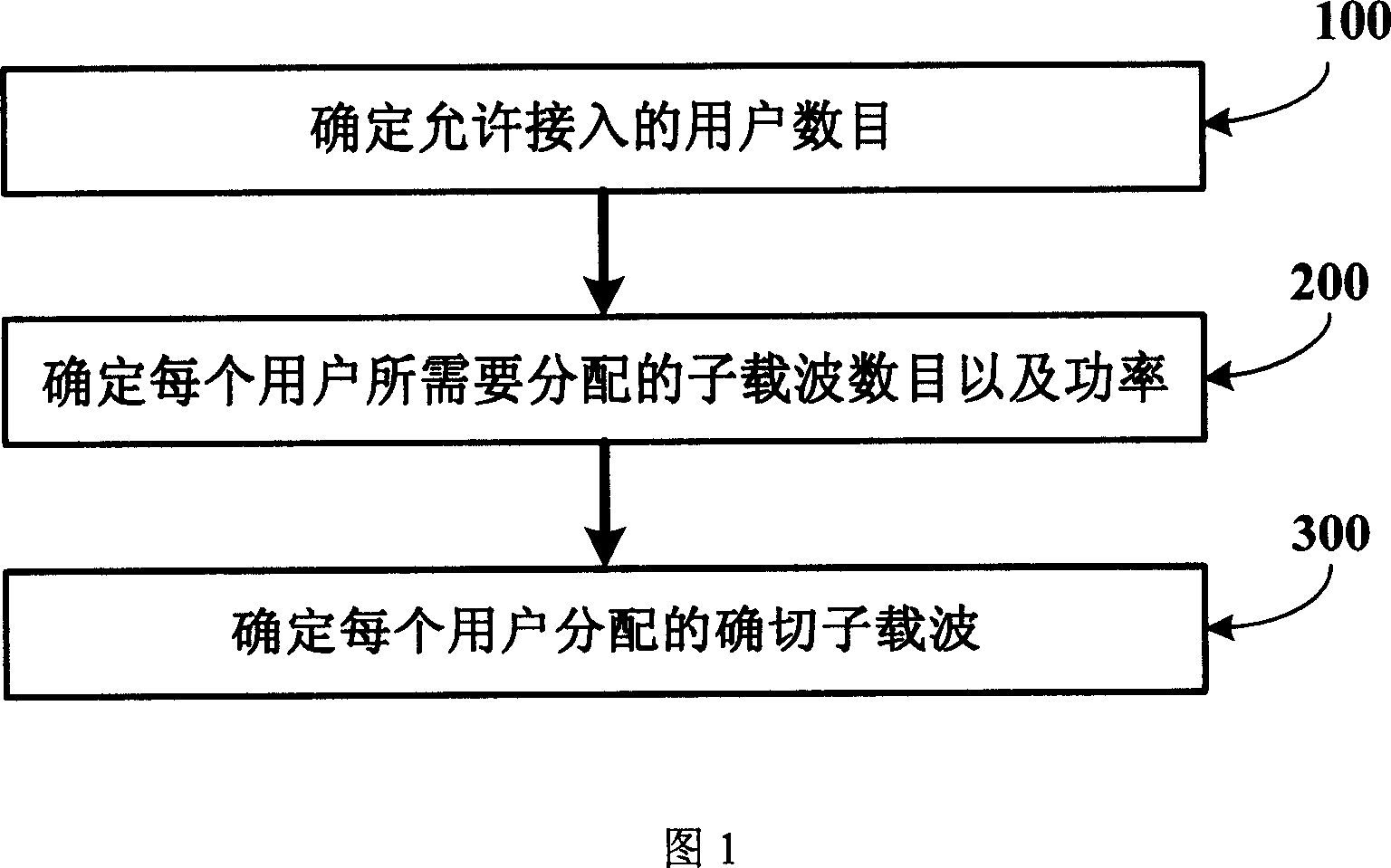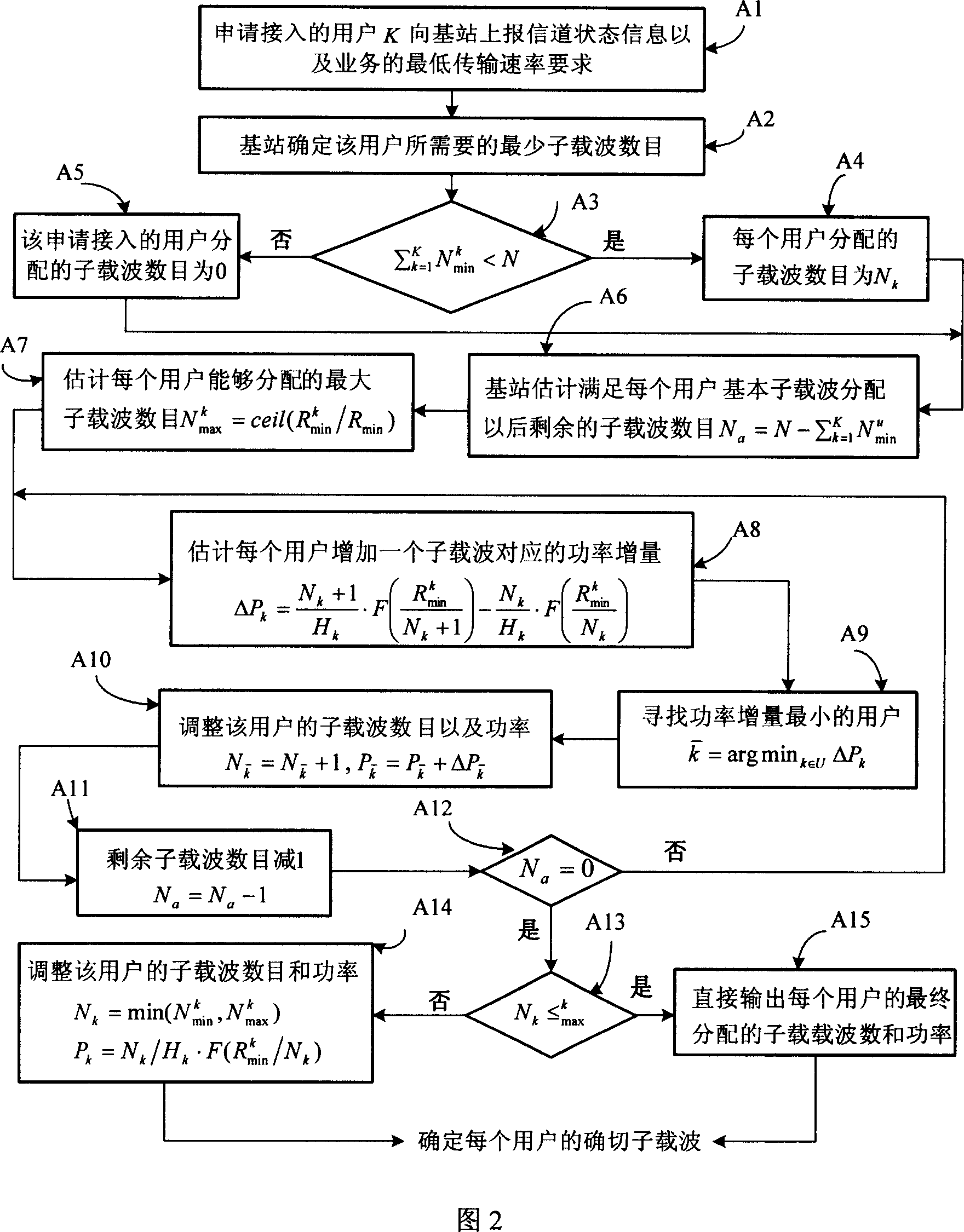Self-adaption resource allocation method in orthogonal frequency division multiplexing multi-address access system
An access system, orthogonal frequency division technology, applied in the field of subcarrier allocation
- Summary
- Abstract
- Description
- Claims
- Application Information
AI Technical Summary
Problems solved by technology
Method used
Image
Examples
Embodiment Construction
[0038] Below in conjunction with accompanying drawing, the method of the present invention is described in further detail:
[0039] In order to clearly describe the idea of the present invention, some assumptions are specially made: in the OFDMA system, it is assumed that K-1 users are already in the active state, that is to say, the minimum number of subcarriers that these K-1 users need to allocate It has been determined that these K-1 users are respectively recorded as users 1, 2, ..., K-1, and now there is a Kth user who is ready to enter the activation state. For the convenience of description, the set of these K users is recorded as U.
[0040] In order to solve the above problems, the present invention provides a method for resource allocation in an Orthogonal Frequency Division Multiple Access (OFDMA) system. The basic idea of the method is to meet the basic service requirements of each user in the system. Under the premise, assign as many subcarriers as possible t...
PUM
 Login to View More
Login to View More Abstract
Description
Claims
Application Information
 Login to View More
Login to View More - R&D
- Intellectual Property
- Life Sciences
- Materials
- Tech Scout
- Unparalleled Data Quality
- Higher Quality Content
- 60% Fewer Hallucinations
Browse by: Latest US Patents, China's latest patents, Technical Efficacy Thesaurus, Application Domain, Technology Topic, Popular Technical Reports.
© 2025 PatSnap. All rights reserved.Legal|Privacy policy|Modern Slavery Act Transparency Statement|Sitemap|About US| Contact US: help@patsnap.com



